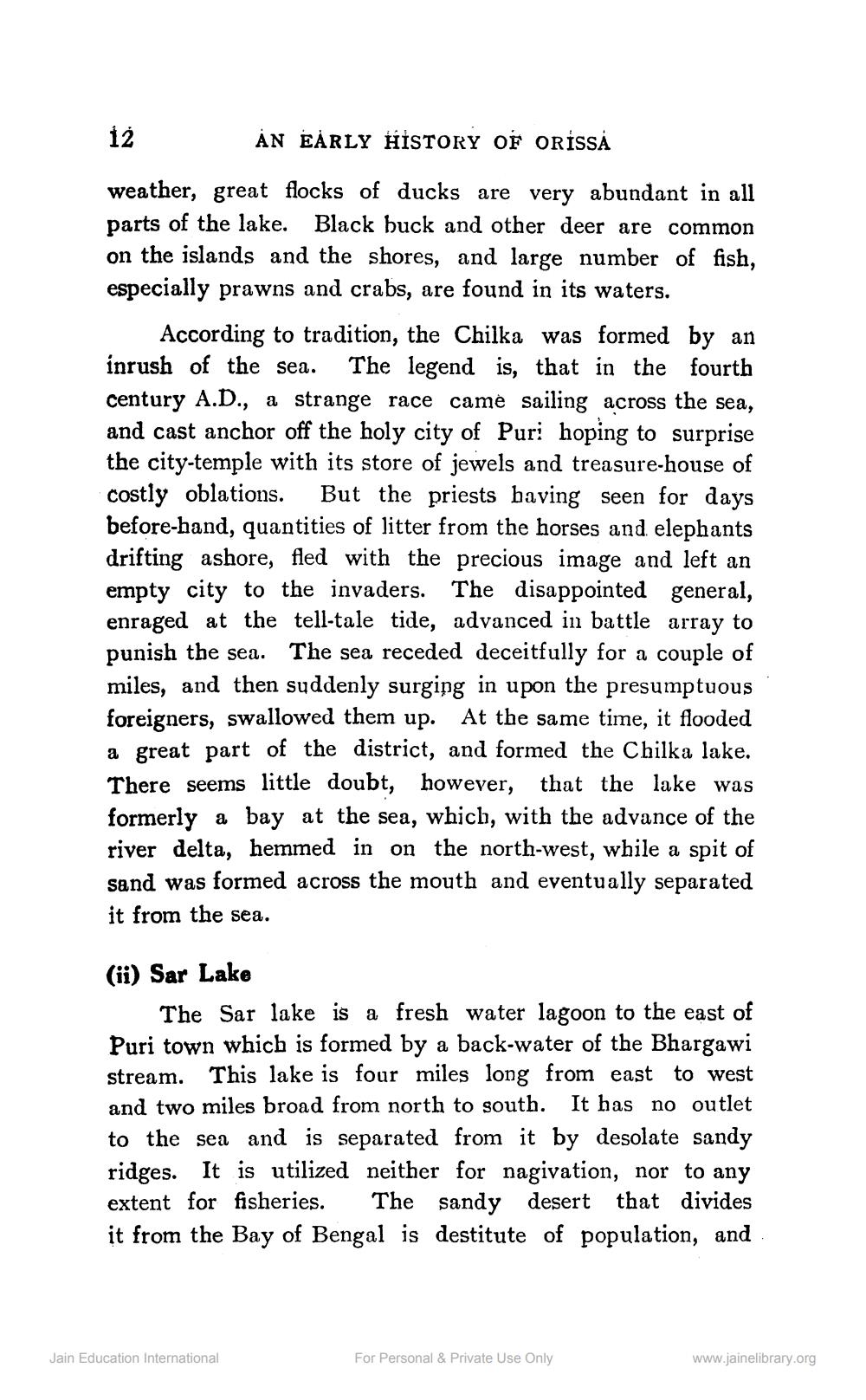________________
IŻ
AN EARLY HISTORY OF ORISSA
weather, great flocks of ducks are very abundant in all parts of the lake. Black huck and other deer are common on the islands and the shores, and large number of fish, especially prawns and crabs, are found in its waters.
According to tradition, the Chilka was formed by an inrush of the sea. The legend is, that in the fourth century A.D., a strange race came sailing across the sea, and cast anchor off the holy city of Puri hoping to surprise the city-temple with its store of jewels and treasure-house of costly oblations. But the priests having seen for days before-hand, quantities of litter from the horses and elephants drifting ashore, fled with the precious image and left an empty city to the invaders. The disappointed general, enraged at the tell-tale tide, advanced in battle array to punish the sea. The sea receded deceitfully for a couple of miles, and then suddenly surging in upon the presumptuous foreigners, swallowed them up. At the same time, it flooded a great part of the district, and formed the Chilka lake. There seems little doubt, however, that the lake was formerly a bay at the sea, which, with the advance of the river delta, hemmed in on the north-west, while a spit of sand was formed across the mouth and eventually separated it from the sea.
(ii) Sar Lake
The Sar lake is a fresh water lagoon to the east of Puri town which is formed by a back-water of the Bhargawi stream. This lake is four miles long from east to west and two miles broad from north to south. It has no outlet to the sea and is separated from it by desolate sandy ridges. It is utilized neither for nagivation, nor to any extent for fisheries. The sandy desert that divides it from the Bay of Bengal is destitute of population, and
Jain Education International
For Personal & Private Use Only
www.jainelibrary.org




